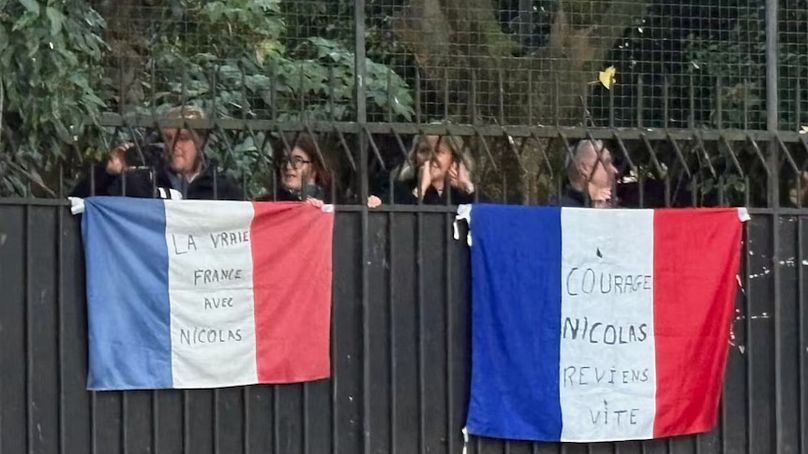Which highly symbolic books has Nicolas Sarkozy taken to prison?

Former French President Nicolas Sarkozy began serving a five-year sentence at La Santé prison in Paris on Tuesday.
Sarkozy, who led the country between 2007 and 2012, was convicted in late September of criminal conspiracy over a plan for late Libyan dictator Muammar Gaddafi to fund his electoral campaign. He becomes the first former French leader to be jailed since Nazi collaborator Marshal Philippe Pétain after World War II.
"An innocent man is being locked up," he said en route to La Santé.
Under the ruling, Sarkozy, 70, will only be able to file a request for release to the appeals court once he is behind bars, and judges will then have up to two months to process the request.
In the meantime, the former president will have to pass the time in his 11-square-metre cell, which features a hotplate for cooking, a small desk, and a shower with a toilet. He will have access to a television (for a fee of €14 per month), a library, and a gym.
Sarkozy has mentioned plans to write a new book during his time in prison, and has taken three literary companions with him – the maximum allowed by inmates.
He told French outlet Le Figaro he is bringing Alexandre Dumas’ “The Count of Monte Cristo” (in two volumes) and a biography of Jesus Christ.
The first, published in 1846, is highly symbolic as its hero, Edmond Dantès, is unjustly imprisoned for 14 years and plots his revenge after escaping at the end of Volume I.
There’s no saying whether Sarkozy identifies with Dantès, but the book choice seems far from coincidental considering the former president has never stopped proclaiming his innocence. That, and the book’s hero is the most famous innocent man unjustly convicted in French literature.
Far from subtle when it comes to symbolism, but a cracking read regardless.
As for the second book, “Jésus”, by Jean-Christian Petitfils - published in 2011 - it offers a well-documented look at the life of Christ. Petitfils draws on historical sources and research to paint a portrait that is removed from purely religious narratives.
Again, a somewhat on-the-nose choice, but one which hopefully should counterbalance any Edmond Dantès-shaped desires for revenge...
Today


